The Festival of Russian Culture was celebrated in different cities of India and we could also attend one of the evening at Kamani Auditorium in Delhi. It was a musical show call 'The State Ensemble of Cossack Song "Krinitsa"'. We thoroughly enjoyed the show and have also added a few videos in this blogpost apart from these colourful photographs.
.....
The State Ensemble of the Cossack Song "Krinitsa" is a musical ensemble from Ukraine that specializes in performing Cossack folk songs. Cossacks are a group of people with a distinct culture, history, and traditions that developed in the region of the lower Dnieper river in Ukraine and Russia. Their music is characterized by its use of the Cossack choir singing style, which is characterized by the use of close harmony, strong rhythms, and powerful vocal performances. The ensemble has gained recognition in Ukraine and abroad for its performances, which often include traditional Cossack dances and costumes.
The Festival of Russian Culture in India is an annual cultural event that takes place in India, usually in the capital city of New Delhi. The festival is organized by the Embassy of Russia in India and features a wide range of cultural activities, including music and dance performances, art exhibitions, film screenings, and book fairs, showcasing the rich cultural heritage of Russia. The festival aims to promote cultural exchange between Russia and India and to deepen the friendship and understanding between the two countries.
The Indian Council for Cultural Relations (ICCR) is an autonomous organization under the Indian Ministry of External Affairs that is responsible for promoting cultural exchange between India and other countries. ICCR is closely related to The Festival of Russian Culture in India in that it often partners with the Embassy of Russia in India to organize and promote the festival. ICCR may provide financial support and logistical assistance to the festival organizers, and also may invite Indian artists and cultural groups to participate in the festival, helping to showcase the diversity and richness of Indian culture. Additionally, ICCR also promotes cultural exchange with Russia by organizing events like exhibitions, performances, and workshops.
As The Festival of Russian Culture in India is an annual cultural event, there are various musical instruments that are used in the performances during the festival. Some examples of musical instruments that may be used in performances during the festival include:
Balalaika: a traditional Russian string instrument that typically has three strings and a triangular body.
Bayan: a type of chromatic button accordion that is very popular in Russia and other Slavic countries.
Domra: A long-necked, plucked lute, which is considered a national instrument of Russia.
Garmoshka: a diatonic button accordion that is also popular in Russia and other Slavic countries
It's worth noting that the festival is a cultural event so it may feature other traditional instruments as well.
Russia has a rich and diverse musical tradition, with a wide range of different styles and genres. Some of the main types of music from Russia include:
Classical music: Russia has a long and distinguished history of classical music, with famous composers such as Tchaikovsky, Rachmaninoff, and Prokofiev. Russian classical music is known for its emotional expressiveness and use of folk elements.
Folk music: Russia is home to a wide variety of ethnic groups, each with its own unique musical traditions. Folk music in Russia is characterized by its use of traditional instruments such as the balalaika, domra, and garmoshka, and often features close harmony singing and intricate rhythms.
Cossack music: Cossack music is a traditional style of music from the Cossack people of Russia and Ukraine. It is characterized by its use of the kozak, a small wooden flute, and features a mix of Eastern European and Central Asian influences.
Gypsy music: Gypsy music, also known as Romani music, is a style of music that originated in the Romani people of Russia and Eastern Europe. It is known for its lively rhythms and use of instruments such as the violin, accordion, and balalaika.
Pop music: Russia has a thriving pop music scene, with many popular artists and bands that are known both within the country and internationally. Pop music in Russia is influenced by Western pop music but also features elements of traditional Russian and Eastern European music.
Electronic and experimental music: In recent years, there has been a growing interest in electronic and experimental music in Russia, with many artists and musicians pushing the boundaries of traditional music and incorporating new technologies and sounds.
These are just a few examples of the different types of music from Russia, and the country's musical tradition is much more diverse and rich.
Cossack music is known for its lively rhythms and energetic beats, which are often accompanied by dancing and other forms of traditional Cossack performances. The music is often performed by a group of musicians playing traditional instruments such as the balalaika, domra, and garmoshka, and can also feature vocal performances, with solo singers or choral groups.
Cossack music is also known for its use of traditional vocal styles and harmonies, which often include close harmony singing and intricate rhythms. The lyrics of Cossack songs often tell stories of love, war, and adventure, and are often patriotic and celebrate the Cossack way of life.
Cossack music also has a strong connection to the history and culture of the Cossacks, and many of the songs and dances are associated with specific historical events or rituals. For example, the "Khorovod" dance is a traditional Cossack circle dance that is often performed at cultural events, and the "Kozachok" is a traditional Cossack dance that is typically performed by men. Cossack music is not only enjoyed by the Cossacks but by the people of Russia, Ukraine and other countries as well.
Cossack clothing, also known as Cossack dress, is a traditional style of dress worn by the Cossacks, a group of semi-nomadic people from Russia and Ukraine.
Cossack dress can vary depending on the region, but it is generally characterized by its use of bright colors, intricate embroidery, and traditional patterns.
For men, traditional Cossack dress typically consists of a shirt, pants, and a long coat. The shirt is usually made of linen or cotton and is usually white or light-colored. The pants are usually made of a heavy fabric, such as wool or cotton, and are often tucked into high boots. The long coat, called a "cherkesska," is typically made of a heavy wool or felt and is often brightly colored.
For women, traditional Cossack dress typically consists of a long dress, apron, and headscarf. The dress is usually made of a bright, colorful fabric, often featuring intricate embroidery and beadwork. The apron is typically worn over the dress and is also often decorated with embroidery and beadwork. The headscarf is typically made of a lightweight fabric and is worn over the hair.
It's worth noting that the traditional dress is not worn on a daily basis, but it is still worn on special occasions such as festivals, weddings, and other cultural events. Additionally, the traditional dress has been modified over the years, so today it's not rare to see Cossacks wearing modern clothing as well.
Cossacks are known for their strong martial tradition, and many Cossack communities have a strong focus on physical fitness and military-style training. Some of the main actions performed by Cossacks include:
Dancing: Cossacks are known for their lively and energetic traditional dances, such as the "Khorovod" and "Kozachok," which are often performed at cultural events and celebrations.
Horseback riding: Cossacks have a long tradition of horseback riding, and many Cossack communities continue to maintain this tradition today. Horseback riding is often used in Cossack military training and is also featured in traditional Cossack performances.
Weapon handling: Cossacks have a martial tradition and many of them have experience handling weapons such as sabers, lances, and rifles.
Wrestling: Cossacks have also a tradition of wrestling, and it's a common sport among them, it's called "Koresh" and it's a traditional wrestling style that is specific to the Cossacks.
Physical fitness: Cossacks place a strong emphasis on physical fitness and many Cossack communities have training programs that include activities such as weightlifting, running, and gymnastics.
It's worth noting that not all cossacks perform all of these actions and some of them may have different traditions and focus on specific activities.
It was a beautiful musical evening with lot of action and joy !



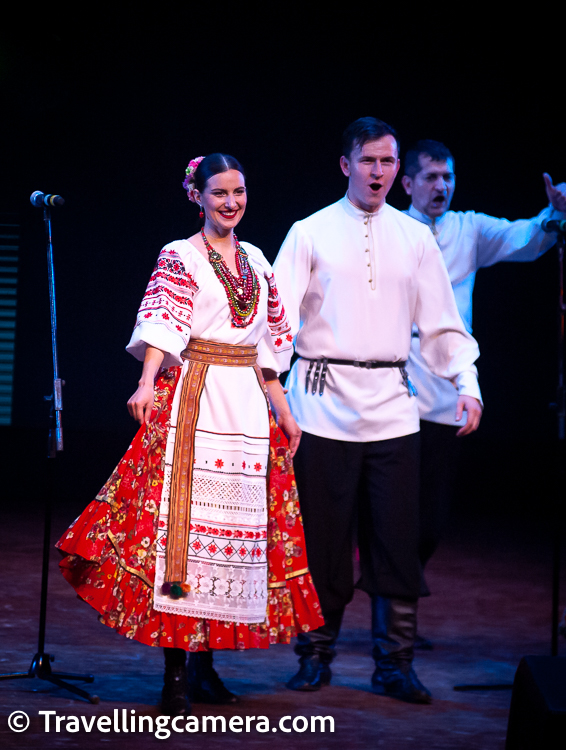






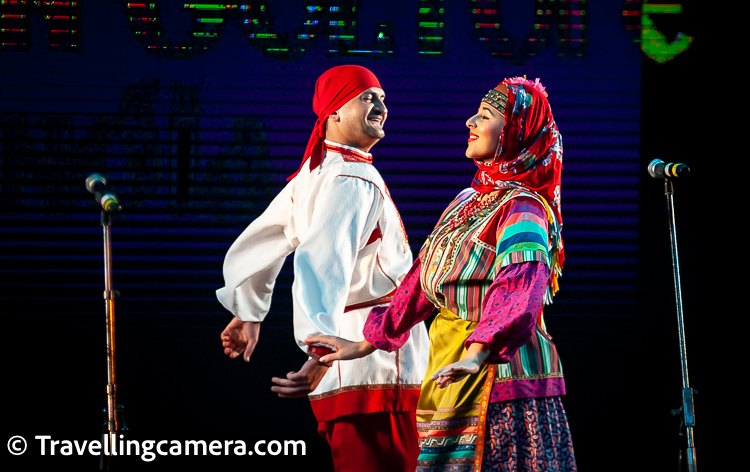
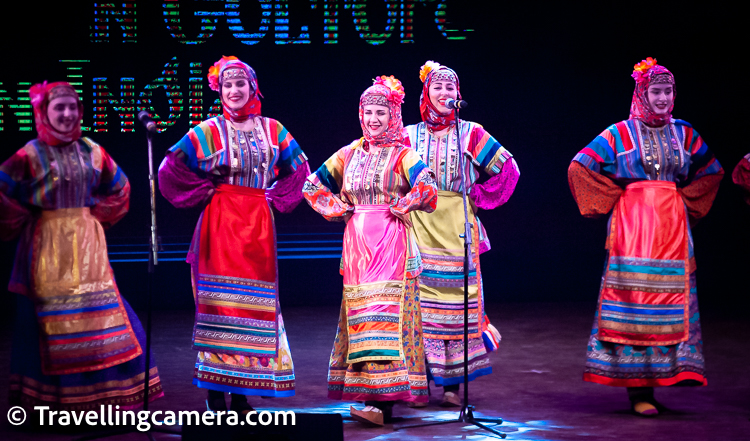
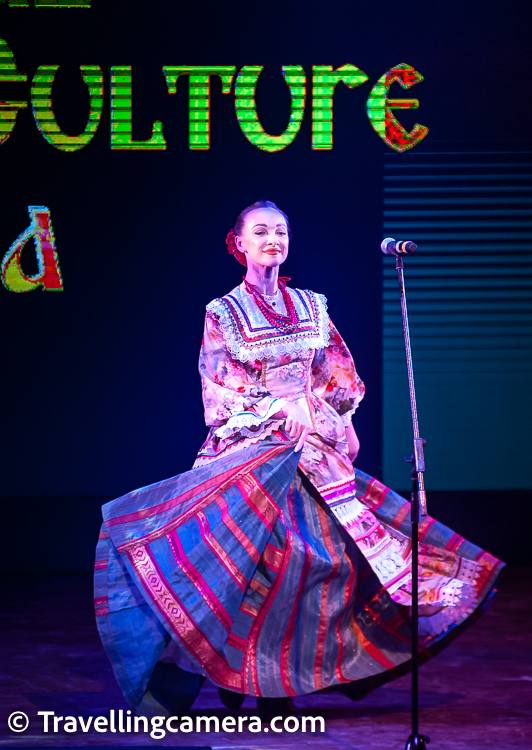




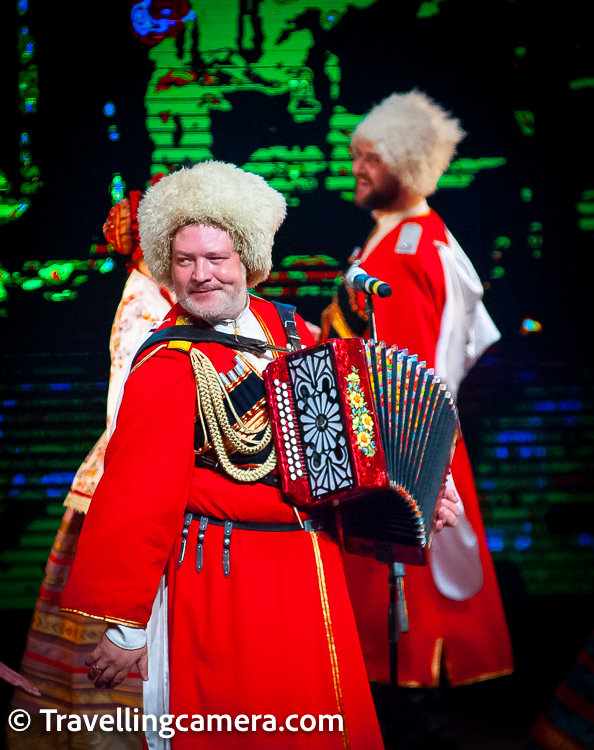
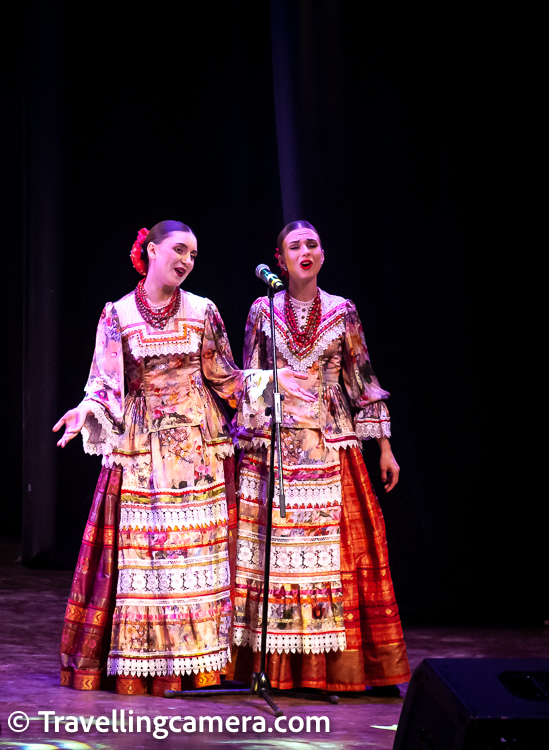


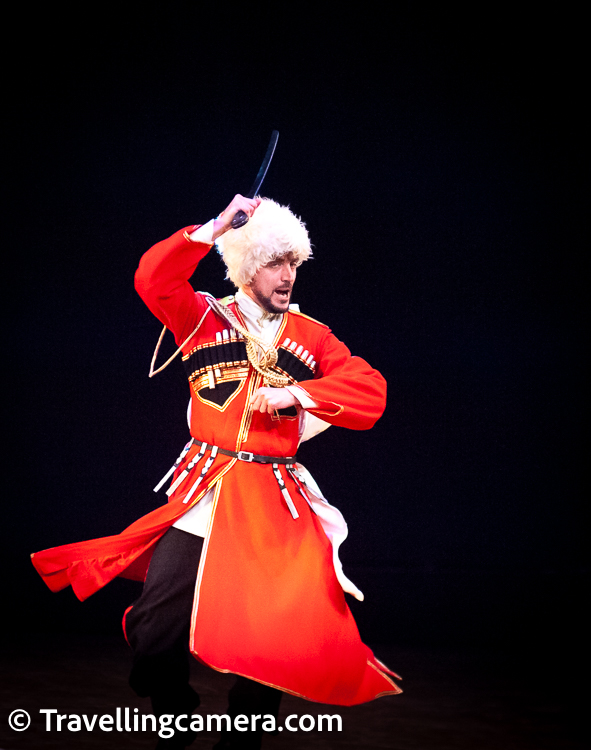



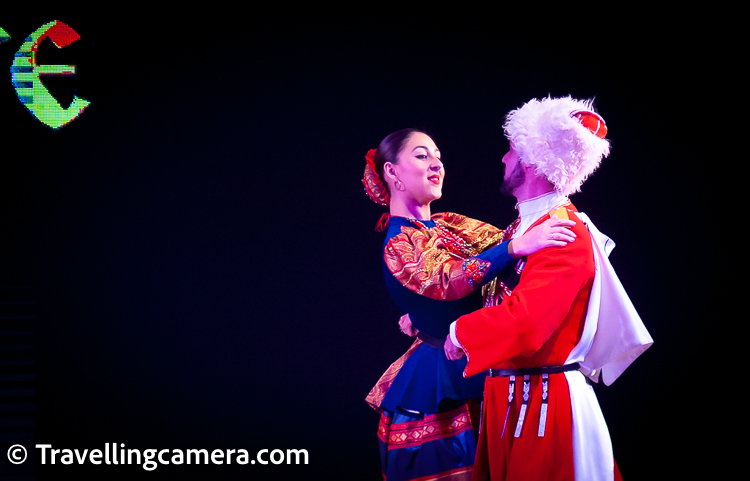
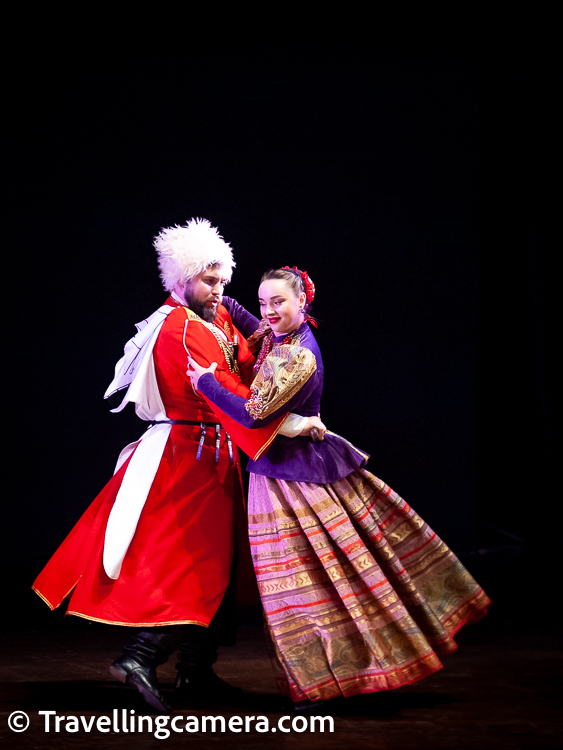
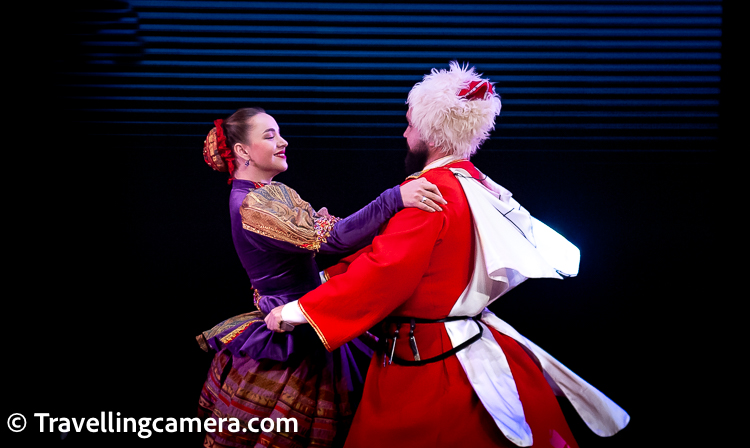

.jpg)
Comments